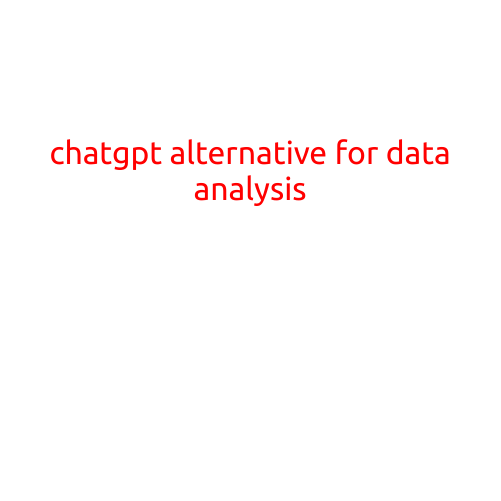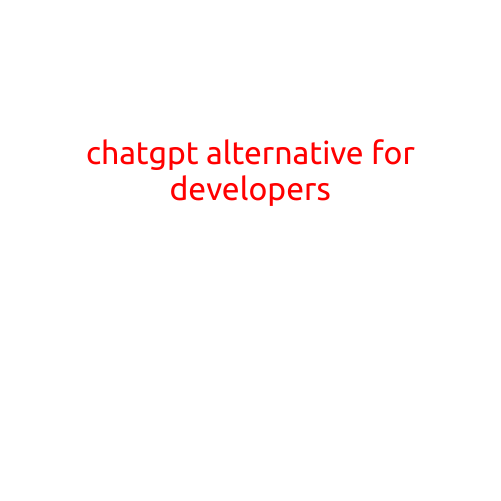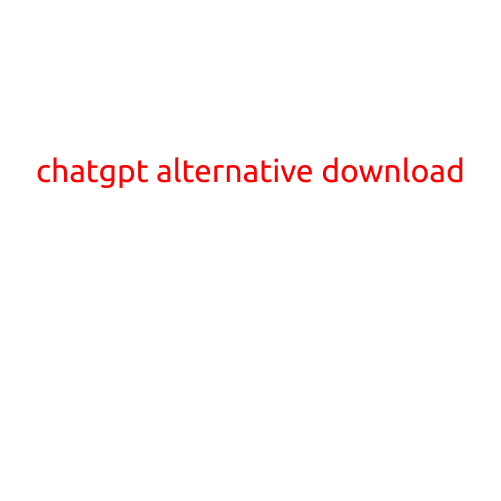
ChatGPT Alternative for Data Analysis
The recent advancements in AI-powered language models have revolutionized the way we approach data analysis. ChatGPT, in particular, has gained significant attention due to its impressive capabilities in generating human-like responses and processing vast amounts of data. However, not everyone may need or want to rely solely on ChatGPT for their data analysis needs. In this article, we’ll explore some ChatGPT alternatives for data analysis, each offering unique strengths and features that can cater to specific requirements.
1. Google Data Studio
Google Data Studio is a free tool that allows users to create interactive and customizable dashboards for data visualization, filtering, and sharing. While it doesn’t have the same level of natural language processing (NLP) capabilities as ChatGPT, Google Data Studio provides an intuitive interface for working with large datasets and creating intuitive visualizations. Its connectivity to Google Analytics and other data sources makes it an excellent choice for those already invested in the Google ecosystem.
2. R and Python Libraries
For those familiar with programming languages, R and Python have extensive libraries for data analysis, including popular alternatives to ChatGPT. R provides the tidyverse package, which offers a comprehensive set of tools for data manipulation, visualization, and modeling. Python, on the other hand, boasts libraries like pandas, numpy, and scikit-learn for data manipulation, analysis, and machine learning. These libraries can be used for tasks such as data preprocessing, statistical modeling, and visualization, making them effective alternatives to ChatGPT.
3. Power BI
Microsoft’s Power BI is a business intelligence platform that allows users to create interactive reports, dashboards, and visualizations. While it can’t process natural language queries, Power BI provides robust data modeling, visualization, and business intelligence capabilities. Its integration with Microsoft Office and Azure services makes it a popular choice for business users.
4. Databricks
Databricks is a cloud-based platform that provides a unified analytics platform for data engineering, data science, and data analytics. Developed by the original creators of Apache Spark, Databricks offers a scalable, secure, and collaborative environment for working with large datasets. Its support for various programming languages, including Python, R, and SQL, makes it a versatile alternative to ChatGPT.
5. Tableau
Tableau is a data visualization platform that allows users to easily connect to various data sources, create interactive dashboards, and share insights. While it’s not a traditional data analysis tool, Tableau is an excellent choice for those who want to focus on data storytelling and visual communication. Its intuitive interface and support for connectors to various data sources make it a popular choice for business users.
When to Choose an Alternative to ChatGPT
While ChatGPT is an impressive AI-powered tool, there are specific scenarios where a traditional data analysis approach might be more suitable. Consider the following:
- Complex data processing: When dealing with large, complex datasets that require in-depth data processing, traditional programming languages like R or Python might be more effective.
- Business intelligence: Power BI and Tableau are better suited for business users who require a user-friendly interface and robust data visualization capabilities.
- Customization: Databricks provides a flexible, cloud-based environment for custom data analysis and modeling.
- Integration: When working within a specific ecosystem, such as Google Analytics, Google Data Studio might be a better choice.
In conclusion, while ChatGPT is an innovative and powerful tool for data analysis, there are many alternatives that cater to specific needs and requirements. By understanding the strengths and limitations of each alternative, data analysts and scientists can choose the best tool for their tasks, leveraging the unique features and capabilities of each platform to unlock valuable insights and drive business growth.





